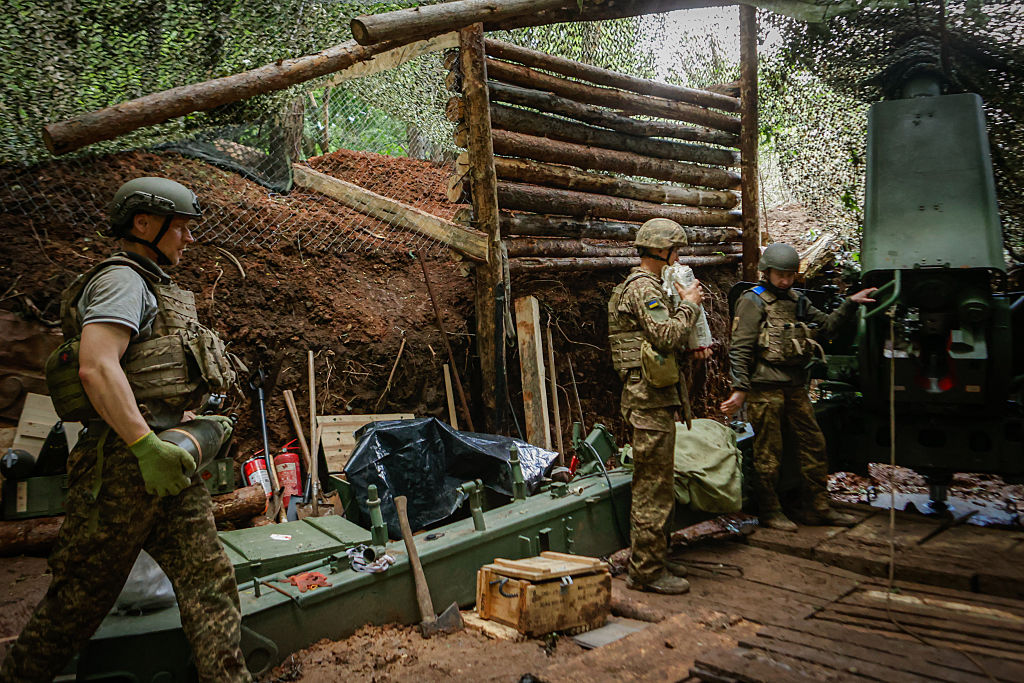
“It’s a horrible war, and it should be stopped,” Trump said from the Oval Office on Monday. “And so if it’s not done, if we don’t have an agreement in 50 days, that’s what we’re doing, secondary tariffs and they’re biting.”
The White House’s tariffs plan appears to draw inspiration from the Sanctioning Russia Act, a bipartisan bill calling for 500 percent duties on any country that imports Russian oil and gas. In addition to the blanket tariffs he laid out on Monday, Trump said he was “strongly considering” backing the legislation during a Cabinet meeting on Tuesday, appearing to reverse course on his prior emphasis on negotiation over coercion.
And it’s not the first time congressional Republicans have pushed the president into taking a harder line on Moscow. During Trump’s first administration, the House and the Senate passed the Countering America’s Adversaries Through Sanctions Act, or CAATSA, with veto-proof majorities, forcing the White House to impose sanctions against Russia’s military and intelligence sectors.
This time around, Russian officials responded to the threat of a new tranche of sanctions with a mixture of indifference and hostility. “Trump issued a theatrical ultimatum to the Kremlin. The world shuddered, expecting the consequences,” senior Russian defense official Dmitry Medvedev wrote on X. “Belligerent Europe was disappointed. Russia didn’t care.” Deputy Foreign Minister Sergei Ryabkov, meanwhile, said “any attempts to make demands, especially ultimatums, are unacceptable to us,” threatening: “If we cannot achieve our goals through diplomacy, then the [war in Ukraine] will continue.”
But Russia and its supporters aren’t the only ones raising questions about Trump’s 50-day deadline. Some analysts have framed the timetable as a window during which Moscow can continue its attacks on Ukraine with impunity. Others have questioned the White House’s end goal going into possible ceasefire negotiations. If Russia proposed an agreement that would require Ukraine to give up large swaths of territory or relinquish future security guarantees, for example, would the Trump administration pressure Kyiv into accepting it?
Still, the announcement of new weapons shipments—which will include Patriot air defense systems, missiles, and ammunition—to Ukraine may mark a broader shift in Trump’s approach to the conflict, particularly after the administration threatened to halt the flow of arms to the war-torn country. As we wrote this week, the president’s about-face appeared to contradict the decision-making of his own Defense Department:
On July 1, Pentagon officials announced that certain weapons shipments, including some types of air defense weapons and field artillery shells, would be put on hold. The move followed a Pentagon review of U.S. weapons stockpiles, reflecting concerns by influential figures within the administration, such as Undersecretary of Defense for Policy Elbridge Colby, that the U.S. is stretching its supplies dangerously thin. “This decision was made to put America’s interests first following a review of our nation’s military support and assistance to other countries across the globe,” said Anna Kelly, a White House spokeswoman.
The White House’s reversal came amid Russia’s summer offensive in Ukraine. On the battlefield, Moscow has made slow but steady advances across three fronts in the east and north, facing fierce resistance but exhausting Kyiv’s manpower and weaponry in the process. The Russian military currently occupies about 20 percent of Ukraine’s territory, a figure that has remained relatively static throughout the war despite this latest offensive push. “Russia is advancing at various points on the front, but they are not advancing with any speed or decisiveness yet,” Peter Dickinson, a Ukraine analyst at the Atlantic Council, told TMD. “It is progress, but it’s very, very slow and it’s not going to win the war.”
But the Kremlin has accompanied its ground maneuvers with intensifying drone and missile attacks across the country, including cities. “To put it in perspective, last summer, let’s say 100 drones in a night would have been a big attack, it would have been a headline. Now they are firing like 700 drones in a night, overwhelming Ukraine’s defense systems,” Dickinson said, adding: “The Patriot systems are among the only systems that can intercept Russian ballistic missiles.”
Just this month, Russia carried out what Ukrainian officials described as its largest aerial assault to date, launching 728 drones and multiple missiles in an effort to exhaust Ukraine’s air defenses. By maximizing the pain for Ukraine’s civilian population, Russia is “putting pressure on the Ukrainian government to end the war,” Bob Hamilton, the director of Eurasia research at the Foreign Policy Research Institute, told TMD.
However, some analysts are skeptical that Russia’s bombing campaign can achieve its intended goal, and, in the meantime, it appears to have forced the White House to rethink its approach to the ongoing conflict.
“This is a war crime that the Russians are committing—one of numerous, of course, in this war—but it’s not something that’s going to achieve any effect on the battlefield,” Dmitri Alperovitch, chairman of Silverado Policy Accelerator, told TMD. “City bombing campaigns like this have never worked.”

















